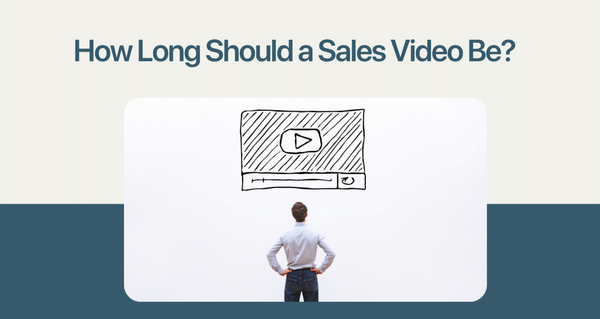Back in the old days, in-your-face marketing was what sold. It was all about being aggressive in your marketing so that a customer buys your product. But times have changed, and marketing with it. Interrupting a random person’s day with an annoying cold call is just not enough these days.
Most businesses find that creating and executing a good lead generation strategy that fits into their digital marketing campaign can be a daunting task. Sure, it’s a challenging process, but there’s no need to be overwhelmed by it.
In this quick guide to lead generation, we’re going to run you through the very basic lead gen fundamentals. We are going to give you an overview of what lead generation is all about, as well as some ideas about what you need to tailor your own lead generation campaign.
Table Of Contents:
- What Is Lead Generation?
- Qualifying Leads
- Why Is Lead Generation Important?
- Lead Generation - Then v/s Now
- Fundamentals of Lead Generation
- Popular Lead Generation Software
- Must Know Tips For Better Lead Generation
- Looking Ahead

What is Lead Generation?
To begin with, what exactly is a lead? Leads are potential customers. A lead has expressed interest in your products and services in some way. This may be through sharing their contact information.
Lead generation is defined as the process of identifying and obtaining leads for your product, service, or business.
Simply put, it is about getting people interested in what you have to offer. This will ultimately result in them taking some action and that will lead to you making more money. It is the start of a process that eventually leaves you with a paying customer.
Qualifying Leads
Not all leads are created equal. If you outsource your lead generation to third-party companies, they may give you low quality leads in high numbers. The quality of leads is just as important as quantity because if there isn’t a sale as an end result the process becomes pointless.
Leads differ in quality, and also in where they are in their journey down the marketing funnel.
- An Information qualified lead (IQL) or a "cold lead,", is at the awareness stage of a marketing funnel. They have given you their contact information while searching for information or doing research. They are not ready to be pushed into a purchase. They need to be given more information about your company, products, and services.
- A Marketing qualified lead (MQL) or a "warm lead” is further down their journey through the marketing funnel. They have been roped in are ready to know more about how your services can solve their problem.
- A Sales qualified lead (SQL) or a “hot lead," is ready to make a purchase. It is imperative that they are provided adequate attention and quick follow-ups at this stage. They are ready to be converted into paying customers.
Why is Lead Generation important?
We’re not gonna lie, lead generation ain’t always cheap. But it is cost-effective if done right. A proper lead generation campaign is a crucial part of any digital marketing campaign. Without investments in lead generation, the growth and expansion of your customer base will be stunted.
An increase in good quality leads to an increase in sales, which leads to an increase in profits, which is obviously something we are all looking to achieve. And so it is crucial for your business to have a planned and well-thought-out lead generation strategy.

Lead Generation- Then vs Now
Today’s marketing strategies differ greatly from what they used to be. Cold calling- although not obsolete, is quickly losing its popularity. Nobody wants to be told what they need by annoying, interrupting, telemarketers.
“Warm calling” is preferred nowadays over cold calling. With the increase in the accessibility of information, it isn’t about seeking out and pestering customers to buy your product. It is more about making sure your product is found when potential customers are looking for it. And then contacting them when you know they’ve expressed interest.
The lead generation strategies of today need to be focused, smarter, more refined, more nuanced. It’s not just about your product, it’s also about framing your product with good quality content.
Today’s buyers face an overload of information. Their attention spans are getting shorter every day. You need to be compelling enough to keep their focus or you lose them in a second. It’s about building trust and relationships with your customer before they’ve even made a purchase. You need to have influence over them. You need to give them more than just your product.
Fundamentals of Lead Generation
Now that we’ve gotten acquainted with the what of things, let’s dig into the how. We are going to look at some of the basic concepts and techniques that you need to know about to build your own Lead generation strategy.
Marketing Strategies- Inbound Vs Outbound
You can generate leads through inbound and outbound marketing strategies. Inbound marketing strategies are about attracting leads to your content- drawing them in, so to speak. Outbound marketing, on the other hand, is about getting your message out there to your customers. The former is known as “pull marketing” and the latter as “push marketing.”
Outbound marketing is the conventional strategy while inbound marketing is newer and more suited to the current digital marketing landscape. Big, flashy advertisements, cold calls and emails, that’s outbound. Getting organic traffic through blogs and SEO, that’s inbound.
Inbound marketing is about delivering content focused on being useful to potential customers. Outbound marketing is broad and casts a wide net. Outbound is about increasing the number of eyeballs that your product gets, but inbound prioritizes quality over quantity.

Inbound Marketing
Inbound marketing pulls readers in. It offers answers to people searching for them, and through quality answers, hope to convert readers into leads. It is also a technique that requires more patience and consistent effort from the marketer but produces results that are worth it in the end.
1. Content marketing
For inbound marketing, content is king. Content marketing is crucial to drive organic traffic.
According to Wikipedia, “Content marketing is a form of marketing focused on creating, publishing, and distributing content for a targeted audience online.”
Creating good quality relevant content is how you attract attention from leads. Their trust in your content will ultimately translate into trust in your product. The quality of your content shows your authority and credibility in the field. Consistency in your content helps in building long-term relationships with your customers and builds trust and loyalty towards your brand.
High-quality content also improves your visibility in search engines. Quality of content leads to more natural backlinks, which leads to better SERP rankings. All of which, in the end, become more leads, more conversions, and more sales.
Maintaining and promoting a blog is thus a critical element of the content marketing process. But keep in mind that the key to a good blog is having comprehensive content, and not just promotional pieces for your own business. Be sure to make your plugs and your CTAs subtle and appropriately placed. Ask readers to subscribe to your blog, thus helping to build consistent communication. Keep your readers hooked and eventually, they will be primed for conversion.
Capturing leads means you have to get people to give you their contact information so that you can make further progress. Build those points of contact into your content.
2. Search Engine Optimization
Search Engine Optimization or SEO is how you drive traffic by making sure your content is seen by your target audience. Your content needs to be optimized for SERP (Search Engine Ranking Pages) so that your entries are the ones that turn up first when a customer asks a search engine a relevant query.
The most essential thing is that the traffic you receive through SEO is organic and free. SEO brings traffic to your website, and it's possible to produce a large number of high-quality organic traffic who have the potential to become leads.

3. Social Media
Social Media is not just about making friends and having fun. It’s also a place where digital marketers thrive these days. Your business needs to be seen on all social media platforms including Facebook, Instagram, Twitter, and LinkedIn. It helps build your brand image and also creates trust within your customer base.
On a side note, LinkedIn has become a really useful tool for lead generation nowadays. Sponsored features allow you to send InMails to people with CTAs.

Outbound marketing
Outbound marketing is pushy and broad without the specificity of inbound marketing. It’s about ensuring that your product details are seen by the most number of people possible, with less certainty that those viewers will turn into leads.
But for a comprehensive Lead generation strategy, outbound marketing techniques must also be made use of. It is the proper combination of both inbound and outbound that make for a successful lead generation strategy.
1. Advertisements
Advertising is about getting rented attention, as opposed to the earned attention generated by most inbound strategies. Traditional advertising- Billboards, television, radio, etc - are still valid for certain businesses, but are quickly falling in popularity.
In online advertising, the ads you can post are of different types-
2. Display Ads
They are visual advertisements- image, video, pop-ups, banners, etc- that are usually displayed on a third-party website. You can place your ads on pages that you think are relevant to your target audience, which increases the possibility of the ad being clicked on.
3. PPC, CPM, and CPA
In SEM(Search Engine Marketing) you can pay to have different types of ads- Pay-per-click(PPC), Cost Per Thousand (CPM), or Cost Per Acquisition (CPA) ads.
In the PPC system, a rate is paid every time someone clicks on your ad. And in CPM a fixed rate is paid per every thousand impressions(views). In both these systems, there are ways in which third-party advertisers you hire can commit fraud and fool the actual results. In CPA, you pay per lead you get from the ad. This method is better and safer compared to the others.
4. Social Media Ads
These are shown on social media platforms such as Facebook, Instagram, LinkedIn, and Twitter. These ads could be organic, which is seen by your followers, or sponsored, where you pay to reach a larger target audience.
5. Email marketing
Email is how you stay in touch with existing customers, keep pursuing potential leads, and also generate new leads. Email is how you maintain communication with your customer base. It is still the leading outbound strategy used by marketers.
Using email marketing for lead generation means putting your content in front of prospects who are not even looking for you, with the hope that they might be interested.
Email marketing is not just used for initiating contact, but also to keep up communication with leads who have at least expressed interest. Email marketing is getting trickier these days as spam detection is becoming more efficient. Spam folders are the bane of email marketing.

6. Content Syndication
Especially if you're new in the business, a lot of the leads you generate go unconverted, because you have to build your credibility from scratch. You have to make your customer understand who you are and what you do before you can even attempt to lead them to a sale. Using Content syndication you piggyback off the established trust your target audience has with another site.
You could guest-post on established business sites, which helps your content reach more viewers. Or you can do collaborations with other brands, where you promote each other.
7. Events
Conducting events gives you the opportunity to get to know your customers better, and build trust by making connections offline. It helps boost brand awareness and reach. Events could be small functions, tradeshows, or webinars.
Lead Nurturing
Having a Lead Nurturing strategy to follow up on your lead generation is important to actually convert your leads to sales. Lead generation and nurturing should be a continuous process, going even beyond making the initial sale and ensuring customer loyalty for the future.
Pipeline Marketing
Pipeline Marketing is combining lead generation and lead management to help direct potential customers down the marketing funnel.
It is about focusing on the customer through the marketing funnel and providing support to them during all stages of the journey.

That means having a proper TOFU, MOFU, and BOFU (Top/Middle/Bottom Of the FUnnel) marketing strategy. At the top of the funnel, you attract potential customers, in the middle you engage them, and at the bottom you convert them.
This approach means that you don’t just generate leads and then pass them on and forget about them, you also give priority to lead nurturing. This results in better conversion rates and everybody is happy.
Popular Lead Generation Software
There are several tools now available in the market to aid you in your lead generation strategy, too many tools actually. If you’re just starting out, it’s easy to get overwhelmed by just looking through the collections. So here are a few suggestions on what tools to pick from for lead generation-
Unbounce is an easy-to-use landing page creation tool with a simple drag and drop interface.
Mailchimp is one of the most popular email marketing software in the market. It offers email building and email automation.
- Sumo
Sumo is one of the leading email capture tools available. It helps in form and email collection. It lets you create popups and welcome mats on your website to collect leads.
Leadfeeder is a tool used for lead data collection. It can generate leads even if potential customers didn’t fill out any forms by identifying visitors and their data and also provides important contact information.
CRM is one of the many services that are provided in the Hubspot suite. It aids in organizing and nurturing leads.
Using chatbots to aid in lead generation is a common tactic used to improve customer interactions. Videoform takes it one step further, using videos to interact with site visitors. This results in a more “human” experience. It also allows users to respond any way they want, via text, audio, or video.
Must Know Tips for Better Lead Generation
- Content Marketing and SEO brings traffic to your website, and what leads see there might make or break them. Your website must be properly optimized. That means fast loading times, optimization for mobile, good and interactive design and layout, and proper placement of CTAs. Your website landing page plays a crucial part in converting your leads.
- Your target audience makes a huge difference as to what kind of content strategy you should be opting for. In outbound marketing, when choosing your platforms, you need to consider if your product is B2C or B2B. The former can be promoted on mainstream media platforms in most cases as it needs to get directly to the people, and the latter would probably perform better on specific and niche platforms like industry-specific sites and publications.
- The foundation of any lead generation strategy is understanding your customer. By identifying your target audience, and understanding how they think, search, and react, you can optimize your marketing strategy to suit them better. Creating a buyer persona can help you with this.

Looking Ahead
In 2020, following the rulebooks simply isn’t enough to cut it. Customers are easily self-educating and becoming armchair experts. Everybody is competing for the few breadcrumbs floating around the digital market.
What matters today is what you’re doing differently from the rest. How you stand out. What would make a customer want to choose you instead of the other guy? Innovation matters. Doing things with a fresh and different perspective matters. Experimentation is worth the risk. Be creative in your lead generation tactics.
Build on these fundamentals of lead generation to create a solid lead generation strategy for your business, and you will not regret that investment.




